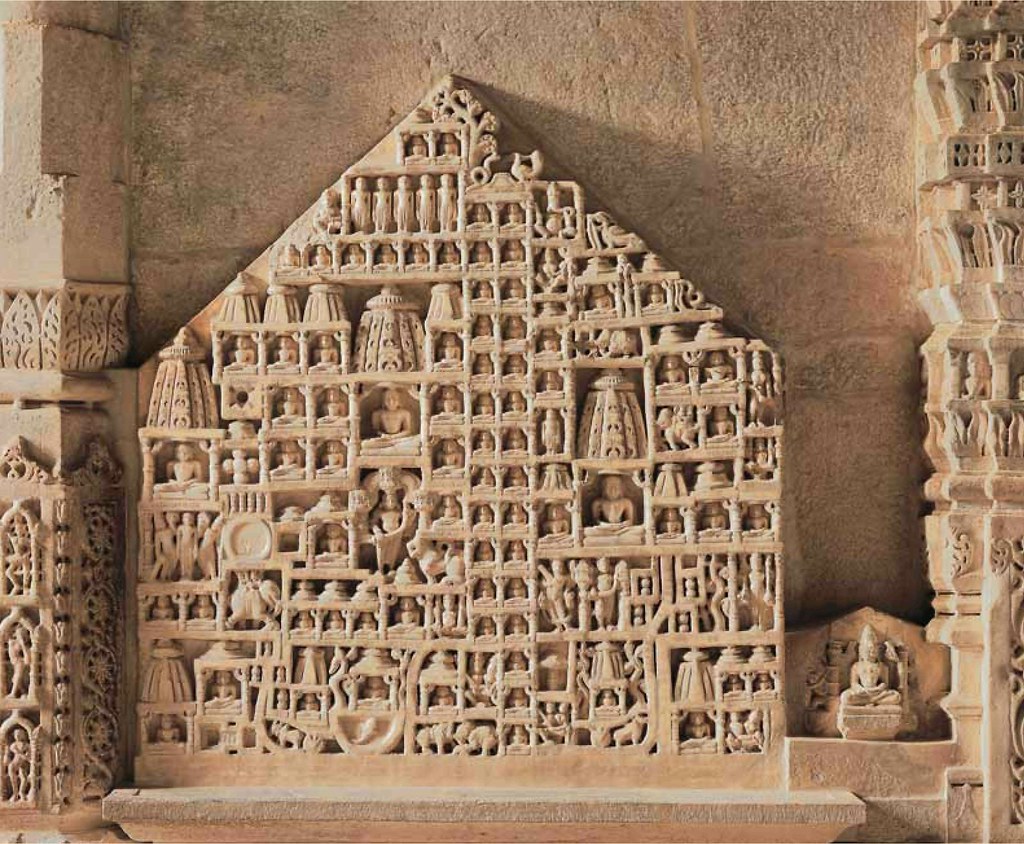Stylised representations of the holy mountains are common to Jain temples. On P.74-75, the Shatrunjaya is shown divided almost like a case in which figures of Tirthankaras and shikharas (temple towers) have been arranged.
 Symbolic representation of Shatrunjaya, the holiest mountain of the jains
Symbolic representation of Shatrunjaya, the holiest mountain of the jainsOn the southern side of the temple, there is a splendid relief of Parsva, the twenty-third ford maker; he is presented standing, flanked by two Jains and two female serpents carrying fans. A one thousand-headed serpent hood protects his head. Serpent gods and goddesses with human bodies are framing the whole scene their serpent tails knotted together. The two fan-carrying serpents are also joined with them.
 Parsva flanked by two Jains and two female serpents carrying fans. A one thousand-headed serpent hood protects his head.
Parsva flanked by two Jains and two female serpents carrying fans. A one thousand-headed serpent hood protects his head.Although this relief of the perhaps most popular Tirthankara, it dates back to only 1846, yet it is a hot favourite among visitors for purposes of photography. This may be due to the good lighting though the more probable cause is the serpent hood. Similar representations in other Jain temples have aroused curiosity. Consequently, the story of Parsva will be narrated here briefly, which may evoke associations for the European visitor concerning his own mythology.
